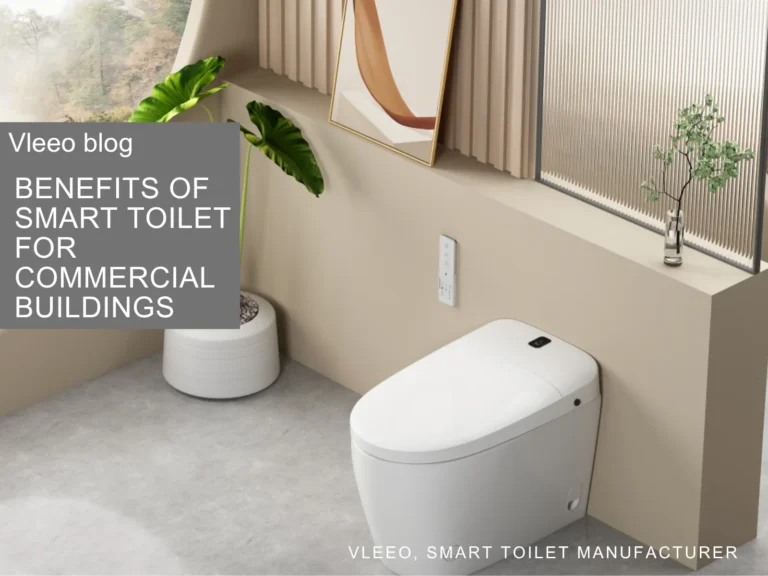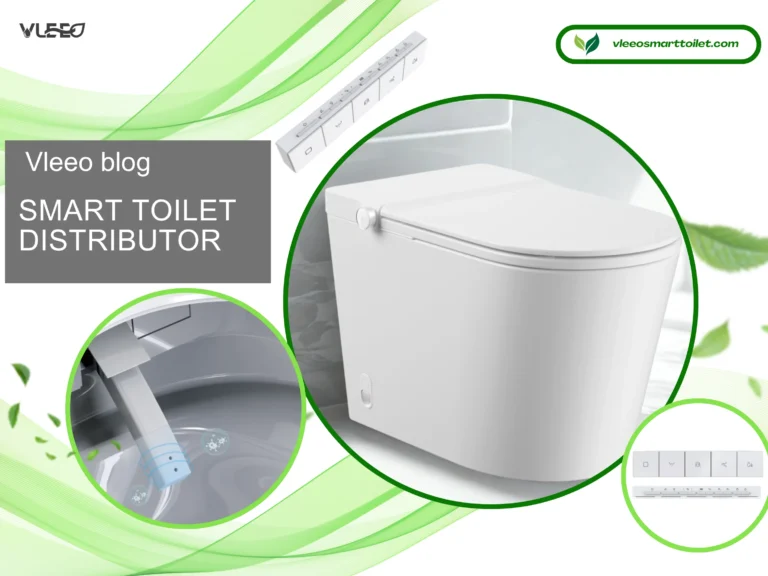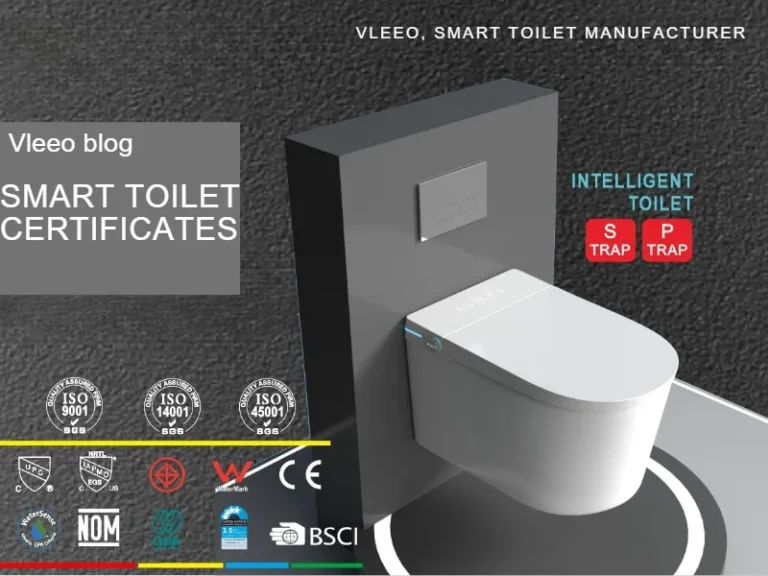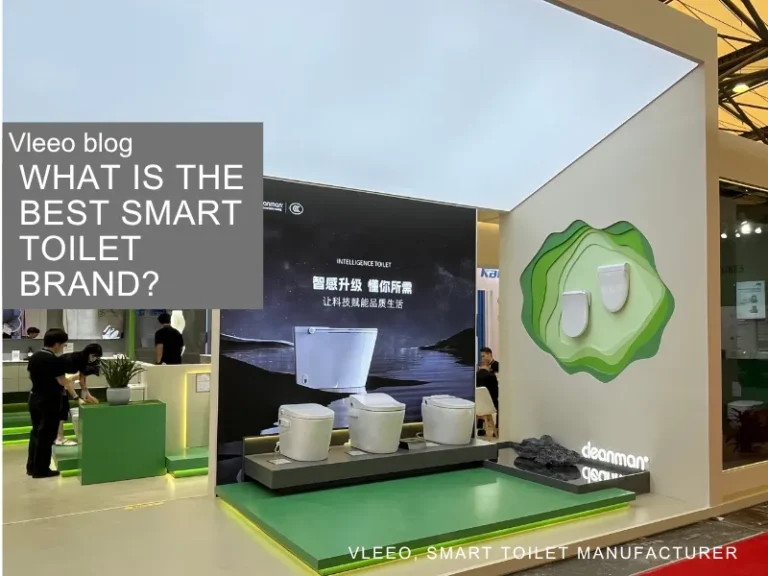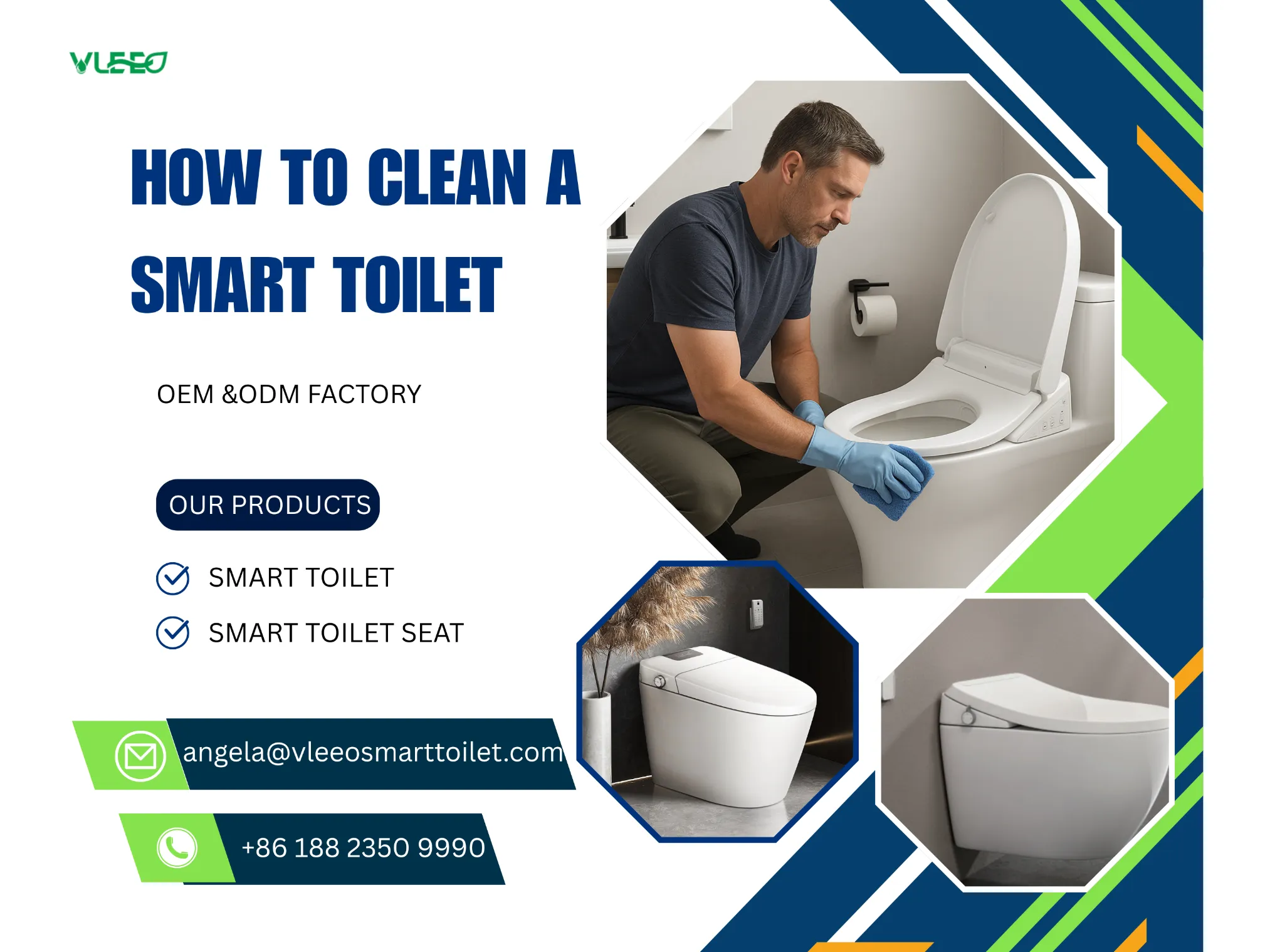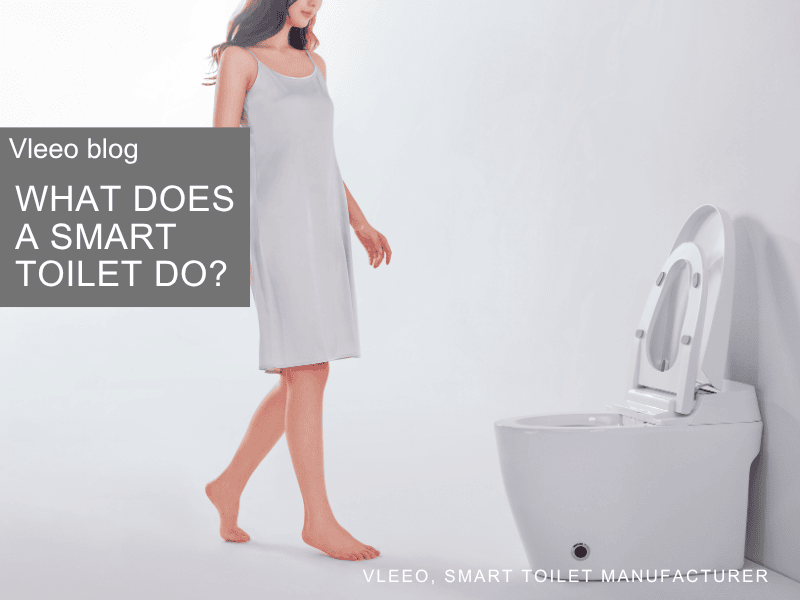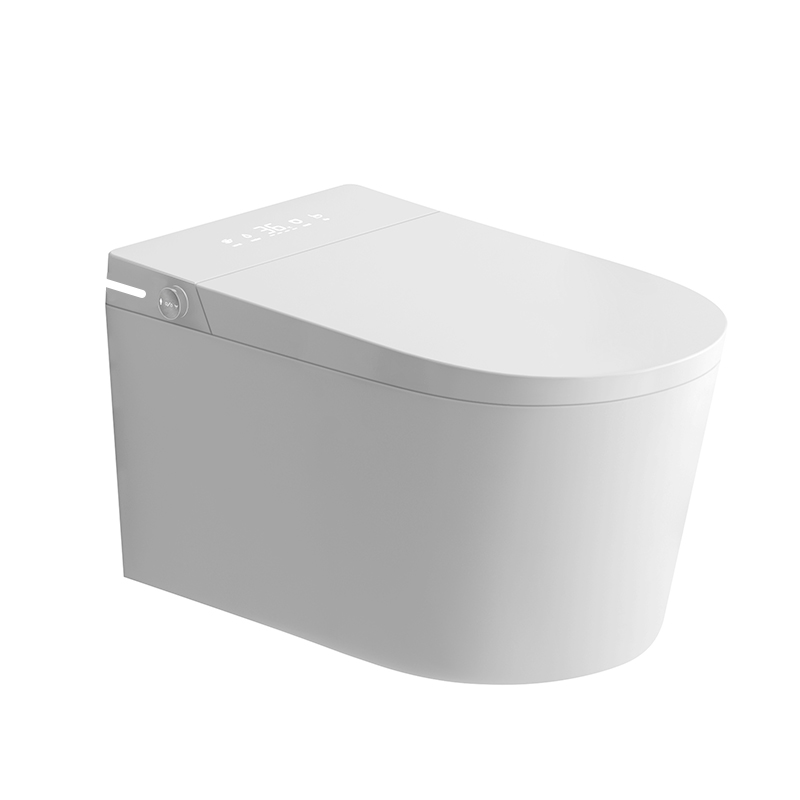-
Guxiang Town, Chaozhou City, Guangdong Province, China

Toilettes intelligentes pour les grossistes : Pourquoi cela change-t-il la donne en 2025?
Introduction
Soyons honnêtes...toilettes intelligentes pour les grossistes n'ont pas l'air passionnantes au premier abord.
Mais en 2025, ils deviendront l'un des produits les plus rentables et les plus discutés dans les chaînes d'approvisionnement en matériaux de construction.
Des hôpitaux aux hôtels, les promoteurs demandent aujourd'hui des solutions de toilettes de haute technologie qui offrent hygiène, confort et automatisation moderne.
Si vous êtes un grossiste qui cherche à se démarquer sur un marché encombré, toilettes intelligentes pourrait bien être votre chance inespérée.
Les toilettes intelligentes ne sont plus des gadgets high-tech réservés aux maisons de luxe. En 2025, les toilettes intelligentes trouveront leur place dans les hôtels, les hôpitaux, les immeubles d'habitation et les centres de soins pour personnes âgées. Pourquoi ? Parce qu'elles résolvent de vrais problèmes. Elles améliorent l'hygiène, contribuent à économiser l'eau et rendent les salles de bains plus accessibles.
Et les chiffres le confirment. Le marché mondial des toilettes intelligentes devrait passer de $6,9 milliards en 2022 à $12,8 milliards en 2030, avec un taux de croissance annuel composé (TCAC) de 11.2%, selon Grand View Research.
Plus surprenant encore ? La plupart des grossistes ne les proposent toujours pas.
C'est pourquoi j'ai élaboré ce guide à l'intention des personnes qui, comme vous, sont curieuses, voire sceptiques, mais veulent garder une longueur d'avance.
Nous examinerons ce qui stimule la demande, comment les toilettes intelligentes comme le Vleeo CL-619 Toilette bidet semi intelligente s'intègrent dans les modèles de vente en gros et comment vous pouvez les commercialiser intelligemment dans votre région.
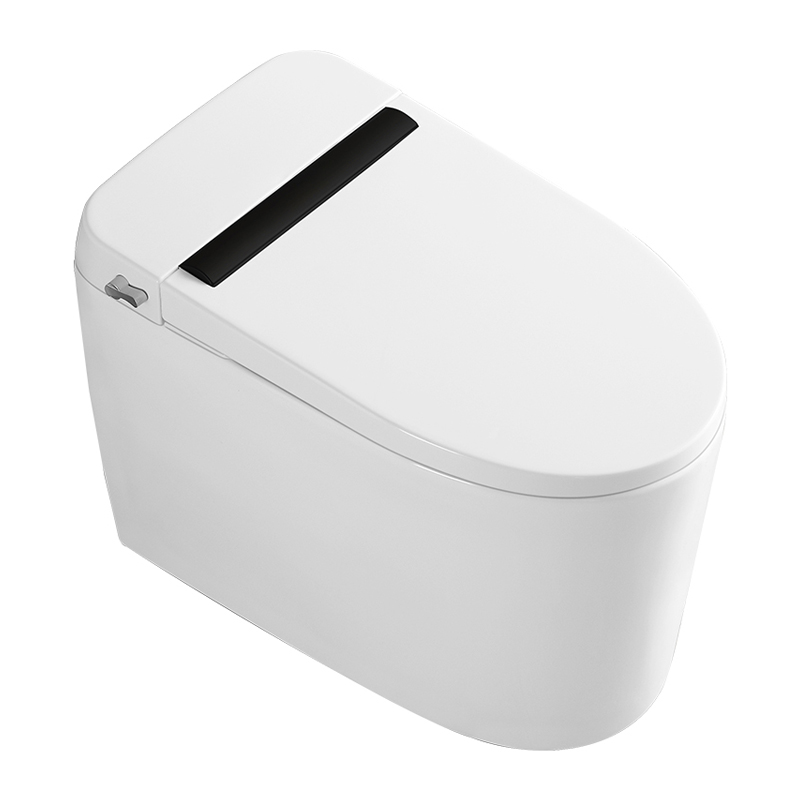
Section 1 : L'essor des toilettes intelligentes - de la nouveauté à la nécessité
À l'époque, les toilettes intelligentes étaient un luxe réservé aux hôtels cinq étoiles ou aux maisons japonaises haut de gamme. Elles étaient dotées de toutes les fonctionnalités - sièges chauffants, bidets intégrés, couvercles automatiques - mais elles ressemblaient davantage à une technologie de pointe qu'à un véritable besoin.
Cela a changé.
Aujourd'hui, les toilettes intelligentes font leur apparition dans les projets de la vie quotidienne : appartements, hôpitaux et aéroports. Et ce n'est plus seulement une question de luxe, c'est aussi une question de sécurité. des caractéristiques pratiques qui permettent d'économiser l'eau et d'améliorer l'hygiène.
Pourquoi ils gagnent du terrain :
- Préoccupations en matière d'hygiène après la mise en place du COVID ont fait des systèmes de chasse d'eau sans contact et des systèmes autonettoyants un must dans les toilettes publiques (Health Facilities Management).
- Vieillissement besoins de la population se développent. Les toilettes intelligentes avec bidet réglable et séchoir à eau chaude aident les personnes âgées à conserver leur indépendance.
- Durabilité matters - de nombreux modèles offrent une double chasse d'eau ou une chasse d'eau à détecteur de mouvement pour réduire la consommation d'eau.
Prenons l'exemple du Japon.80.2% des ménages utilisent désormais des toilettes équipées de bidet, selon Statista. Ces tendances créent une nouvelle demande de toilettes intelligentes pour les grossistes qui veulent garder une longueur d'avance.
Des toilettes intelligentes comme le toilettes intelligentes murales de Vleeo expliquer pourquoi cette tendance est en train de s'étendre à l'échelle mondiale. Ces tendances créent une nouvelle demande de toilettes intelligentes pour les grossistes qui veulent garder une longueur d'avance.

Section 2 : Pourquoi les toilettes intelligentes s'intègrent parfaitement dans le modèle de vente en gros
J'avais l'habitude de penser que les toilettes intelligentes étaient trop "spécialisées" pour être vendues en gros. Mais après avoir constaté leur succès sur le marché actuel, j'ai changé d'avis.
Ils sont en fait conçus pour cela.
Voici pourquoi :
- Des marges bénéficiaires plus élevées: Un WC classique se vend entre $100 et $200. Les toilettes intelligentes comme Siège de bidet intelligent CL-K2 de Vleeo peut vendre au détail jusqu'à $450-$700, avec des marges de gros supérieures à 40%.
- Moins de concurrence sur les prix: Il y a moins de grossistes dans le secteur des toilettes intelligentes, ce qui vous donne plus de flexibilité.
- Potentiel de regroupement: Les toilettes intelligentes peuvent être combinées à des sièges bidet ou à des robinets à détecteur, ce qui permet aux constructeurs d'acheter facilement auprès d'un seul et même fournisseur.
Si vous travaillez avec des projets commerciaux ou des entreprises de conception-construction, vous savez qu'ils veulent des solutions prêtes à l'emploi. Proposer un siège de toilette intelligent fait de vous plus qu'un fournisseur - vous devenez un résolveur de problèmes.
Section 3 : Principaux avantages pour les grossistes proposant des toilettes intelligentes
Alors, qu'est-ce que vous y gagnez ?
Les toilettes intelligentes peuvent sembler n'être qu'une UGS de plus, mais ce n'est pas le cas. Elles peuvent changer la les types de clients que vous attirez et le valeur de chaque vente.
Voici comment :
- 🧲 Attirer des clients plus haut de gamme - Pensez aux hôtels de charme, aux promoteurs immobiliers, aux constructeurs de logements de luxe.
- 💰 Augmentez la valeur moyenne de vos commandes - En ajoutant quelques Combinaisons intelligentes de toilettes et de bidets à une commande de plomberie en gros peut augmenter considérablement les recettes.
- 📦 Plus de ventes avec moins de stocks - Une toilette intelligente se vend deux à trois fois plus cher qu'une toilette ordinaire.
Un de mes amis a commencé à proposer des toilettes intelligentes l'année dernière. Elles représentaient 10% de son catalogue, mais ont rapporté 30% de bénéfices sur les accessoires de salle de bains. C'est pourquoi de plus en plus de fournisseurs se tournent vers les toilettes intelligentes pour les grossistes comme une solution à plus forte marge.
C'est un moyen peu risqué de commencer à monter en gamme, sans avoir à changer tout ce que vous faites.

Section 4 : Cas d'utilisation - Où Les toilettes intelligentes sont très demandées
Vous seriez surpris de savoir où les toilettes intelligentes sont déjà en demande :
- Hôtels et centres de villégiature: Les clients ne tarissent pas d'éloges sur les caractéristiques de confort telles que les sièges chauffants et les chasses d'eau automatiques.
- Établissements de soins de santé: La réduction des efforts physiques et l'amélioration de l'hygiène font des toilettes intelligentes la solution idéale pour les salles de bains des patients.
- Projets de logements pour personnes âgées: Des fonctions telles que la commande à distance de la chasse d'eau et du bidet favorisent l'autonomie.
- Appartements de luxe et maisons intelligentes: Les gens veulent de la technologie dans toutes les pièces, y compris dans les salles de bains.
Selon Statista, le segment mondial des toilettes intelligentes devrait connaître une croissance de 6,7% par an de recettes jusqu'en 2028.
Que vous travailliez avec des constructeurs commerciaux ou des promoteurs immobiliers, les toilettes intelligentes vous permettent de répondre à leurs nouveaux besoins.
Image : Bidet Smart Toilet in Modern Bathroom - Alt text : white ceramic smart toilet with integrated bidet and LED display.
Section 5 : Comment choisir le bon fabricant de toilettes intelligentes ?
Il ne faut pas se tromper de fournisseur, surtout lorsqu'il s'agit d'électronique et d'eau.
Si vous débutez, je vous conseille d'opter pour une ODM modèle comme La collection de toilettes intelligentes préconçues de Vleeo. Ainsi, vous n'avez pas besoin de concevoir votre propre matériel à partir de zéro.
Voici ce qu'il faut vérifier :
- Certifications CE, FCC et ISO - ils facilitent l'importation/exportation et la qualité de l'exposition.
- Options de garantie - Les toilettes intelligentes ont parfois besoin d'être entretenues, et une bonne assistance est importante.
- Fiches techniques claires - demander des PDF, des manuels d'utilisation et des schémas d'installation.
Et testez toujours avant de passer une commande importante.
Demandez un ou deux appareils pour les essayer. Tirez la chasse d'eau, testez le siège chauffant, vaporisez le bidet. Sachez ce que vous vendez.
C'est votre nom qui figure sur la facture - assurez-vous que le produit est à la hauteur.
Section 6 : Commercialisation et vente de toilettes intelligentes par région
Vendre le même produit dans des lieux différents signifie que vous devez adapter votre discours.
En Amérique du Nord :
- Souligner hygiène sans contact, Caractéristiques ADAet intégration de la maison intelligente.
- Les Américains aiment le confort, mais ils tiennent aussi à ce que l'entretien soit facile.
En Amérique du Sud :
- Positionner les toilettes intelligentes comme des améliorations de luxe à un prix équitable.
- Concentrez-vous sur le confort, le style et la valeur, et pas seulement sur la technologie.
En Asie :
- Diriger avec l'efficacité de l'eau et écocertifications.
- De nombreux clients sont déjà familiarisés avec les bidets et les sièges intelligents, c'est pourquoi il faut se concentrer sur la qualité et le prix.
Donnez à votre équipe de vente des antisèches :
- Déclarations de prestations en une ligne
- Tableaux comparatifs
- Vidéos montrant le fonctionnement du bidet et du sèche-linge
Les gens n'achètent pas ce qu'ils ne comprennent pas. Il faut donc éduquer d'abord et vendre ensuite.
Section 7 : Surmonter les défis communs
Soyons réalistes : les gens ont des objections.
La plus fréquente est celle que j'entends : "C'est trop cher pour des toilettes".
Voici comment je procède :
- Des toilettes intelligentes remplace plusieurs produits: bidet, désodorisant, veilleuse, siège chauffant.
- Pendant sa durée de vie, il permet d'économiser de l'argent en utilisant moins d'eau, conformément à EPA WaterSense.
Ensuite, il y a le problème d'installation.
Tous les plombiers ne sont pas familiarisés avec ces appareils. C'est pourquoi les bons fournisseurs les proposent :
- Guides d'installation
- Vidéos tutorielles avec code QR
- Des branchements de plomberie et d'électricité faciles à réaliser
Si votre fournisseur ne propose pas d'outils d'assistance, vous vous exposez à des maux de tête.
Et enfin, former votre équipe. Si vos représentants ne comprennent pas les toilettes intelligentes, ils ne seront pas en mesure de les vendre en toute confiance.
Organisez un déjeuner-formation ou enregistrez une vidéo explicative de 10 minutes. Cela portera ses fruits.
Section 8 : Guide d'achat - Comment se procurer des toilettes intelligentes ?
Lorsque vous achetez des toilettes intelligentes, ne les traitez pas comme un stock standard.
Vous devez comprendre quelles sont les caractéristiques les plus importantes pour vos acheteurs et comment choisir un bon fabricant.
Caractéristiques indispensables :
- Double chasse d'eau
- Siège chauffant
- Vaporisateur de bidet réglable
- Télécommande ou écran tactile
- Buse autonettoyante
À quoi s'attendre ?
- Prix de gros : $180–$450/unit
- MOQ : Habituellement 10-50 unités pour les commandes OEM
- Marge typique : 35%-60%
Commencez par des options fiables comme le CL-711 Toilette intelligente avec bidetqui offre des fonctions tout-en-un dans un design élégant.
Testez toujours avant d'acheter en vrac - et demandez si le fournisseur fournit pièces détachées et l'assistance après-vente.
Conseils de pro pour les grossistes
- ✅ Installer une unité de démonstration dans votre salle d'exposition ou votre entrepôt
- 💡 Combinaison avec des miroirs ou des robinets LED pour faire de la vente incitative
- 📦 Proposer des emballages en marque blanche aux constructeurs qui veulent en faire leur marque
- 🧰 Vérifier la compatibilité électrique-surtout pour les envois internationaux
- 📞 Suivi après la vente offrir des conseils d'installation ou des rappels d'entretien
Vous n'avez pas besoin d'être un expert en toilettes. Il suffit d'être celui qui comprend ce qu'est une toilette. les plus importants à votre client.
Principaux enseignements
- Les toilettes intelligentes sont là pour durer - elles se développent de plus en plus. à la fois la demande et l'utilité.
- Les grossistes peuvent se démarquer en offrant produits à marge élevée et à faible concurrence.
- Vous pouvez positionner les toilettes intelligentes dans plusieurs secteurs : hôtellerie, soins de santé, immobilier.
- Ne réfléchissez pas trop : testez une unité, apprenez les bases et regardez où cela vous mène.
FAQ
Q : Les toilettes intelligentes permettent-elles d'économiser de l'eau ? Oui ! De nombreux modèles utilisent des capteurs et des systèmes de double chasse d'eau, ce qui permet d'économiser de l'argent. jusqu'à 20% d'eau par rapport aux toilettes plus anciennes (EPA).
Q : Les toilettes intelligentes sont-elles difficiles à installer ? Pas vraiment. La plupart des appareils modernes sont prêts à l'emploi avec raccords universels. Les bons fournisseurs proposent des manuels et une assistance vidéo.
Q : Quelle est la différence entre OEM et ODM ? OEM signifie qu'il s'agit d'une fabrication sur mesure selon votre conception. ODM utilise le design du fournisseur avec votre logo. Pour les débutants, ODM est plus facile.
Q : Quelle est la durée de vie des toilettes intelligentes ? A propos de 8-10 ansen fonction de l'utilisation et de l'entretien.
Q : Les toilettes intelligentes sont-elles bonnes pour les personnes âgées ? Oui, ils facilitent l'hygiène et la rendent plus sûre. Beaucoup sont livrés avec télécommandes et le bidet doux.
Conclusion
Les toilettes intelligentes ne sont pas seulement des gadgets futuristes, ce sont des améliorations réelles et fonctionnelles que les gens veulent. Pour les grossistes, elles représentent une opportunité opportune d'ajouter à leur catalogue des produits à plus forte marge et très demandés.
Si vous avez hésité, c'est le moment de passer à l'action :
Commencez simplement. Testez une gamme de produits. Et voyez pourquoi les toilettes intelligentes pour les grossistes sont en passe de devenir le nouveau must-have en 2025.
Besoin d'un point de départ ? Explorer les options de toilettes intelligentes de Vleeo-Ils sont prêts pour l'exportation, compatibles avec les normes OEM/ODM et certifiés.
Les constructeurs cherchent de nouvelles façons de se démarquer. Les gestionnaires d'installations veulent des options sans contact. Et ce sont les grossistes capables de fournir ces solutions qui recevront les appels.
Quelle est la prochaine étape ?
Commencez simplement. Adressez-vous à un fournisseur réputé, tel que La gamme de toilettes intelligentes de Vleeo. Commandez une unité. Apprenez-en l'intérieur et l'extérieur. Parlez-en à vos meilleurs clients et voyez s'ils sont intéressés.
Parce qu'en 2025, plus votre catalogue de toilettes sera intelligent, plus votre entreprise se développera intelligemment.

